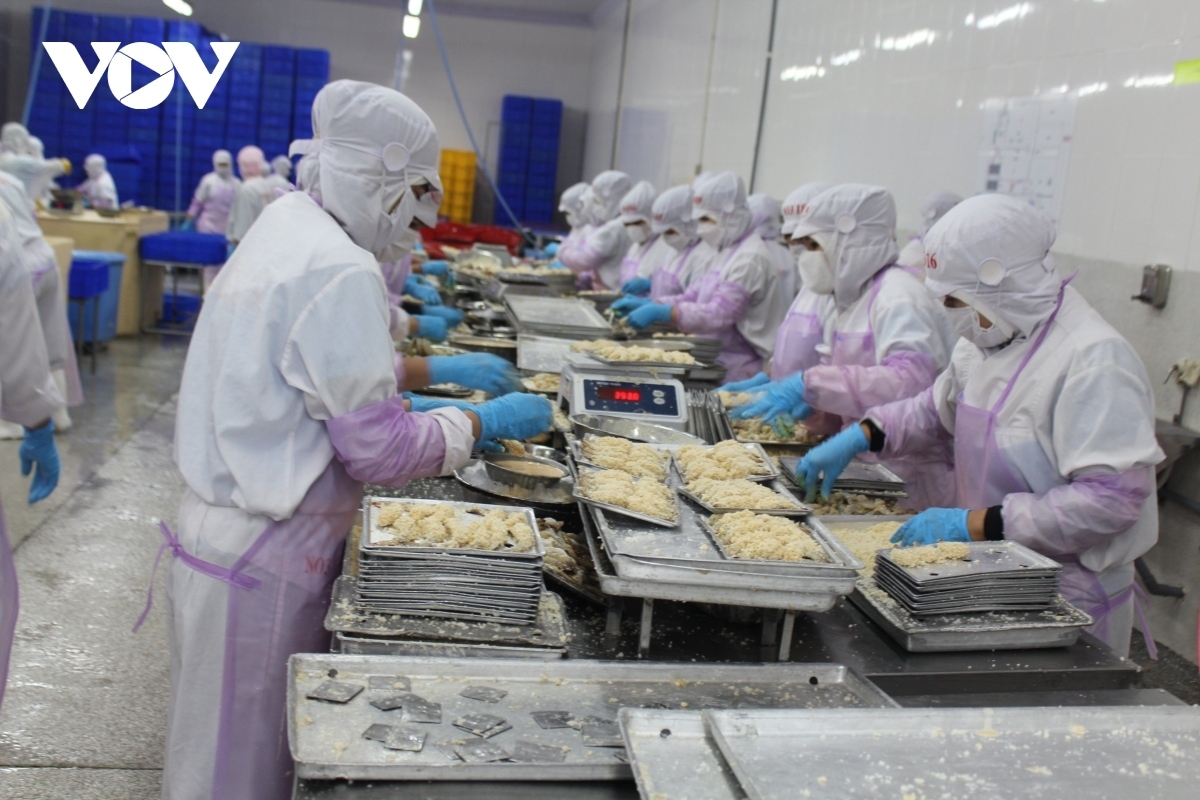Exports in 2023 and high demands from new generation FTAs
VOV.VN - Amid green growth, the circular economy is becoming a global trend and is required as a positive solution to reduce greenhouse gas emissions and improve competitiveness towards the goal of carbon neutralisation and sustainable development, meaning the country must pay attention to the "greenness" of the production chain.

Since the beginning of the year when exporting goods to markets which have signed the EU-Vietnam Free Trade Agreement (EVFTA), Vietnamese enterprises no longer apply the Generalized System of Preferences, but must instead apply the preferential tariff regime according to the commitments under the EVFTA.
This year also marks the fifth year since the nation’s implementation of the Comprehensive and Progressive Agreement for Trans-Pacific Partnership (CPTPP) with higher requirements on "green" standards for products and goods when exporting to these markets.
The enforcement of free trade agreements (FTAs) represents the implementation of commitments with a focus on the elimination and reduction of import tariffs on goods according to the "road map".
When the nation joins the FTA playground, it is seeking both to have more market opportunities and to affirm its compliance with vital competition in the inevitable existence of an "open" economy.
Tran Thanh Hai, deputy director of the Import-Export Department under the Ministry of Industry and Trade, said, "The competition for us to boost exports is actually a constant competition to be able to innovate ourselves and improve quality as well as best meet the needs of consumers.”
However, with a business community made up of more than 96% small and medium-sized enterprises with limited potential, in order to promote technological innovation, investing in production to meet the standards of markets for high value is not easy, he explained.
At a recent trade promotion conference held with the overseas Vietnamese Trade Office system, Vietnamese Trade Counselor Nguyen Thi Hoang Thuy, in charge of the Vietnam Trade Office in Sweden (concurrently Denmark, Finland, Iceland, Norway, and Latvia), pointed out that Nordic countries are particularly interested in issues involving climate change and environmental protection.
The 2023 budget estimates of these countries feature budget estimates for green investment activities and support for environmental protection.
This will continue to influence Nordic consumption patterns, with increasing trends toward environmentally friendly and recycled green products that continue to be popular in Northern Europe, she said.
Thuy emphazised the need to understand the "European Green Agreement" which features a series of strategies launched to make the EU climate neutral by 2050.
Therefore, Vietnamese enterprises need to understand regulations, as well as market trends in order to ensure all requirements when they want to export to this highly lucrative market.
As one of the country’s key export industries, when participating in the global supply chain, the Vietnamese leather and footwear industry needs compliance to meet the high standards of new generation FTAs such as the CPTPP and EVFTA, a factor which will bring both challenges and opportunities to local businesses and workers.
Phan Thi Thanh Xuan, vice chairwoman and general secretary of the Vietnam Leather - Footwear - Handbag Association, stated that the requirements, especially the ones for green production in supply chains, will be a big challenge, so leather and footwear businesses must update information regularly.
Specifically, the EU side has moved to raise the issue of compliance with safe goods standards when producing for exports to the EU market and this law is updated annually.
Furthermore, the German market will soon move to introduce a new law on increasing consultation in the supply chain for third parties. This is also one of the conditions that Vietnamese businesses must comply with, with a failure to respond resulting in failure for exports to this market.
From the actual operation of organic food exporters, it shows that they must focus on the production and processing of products without using chemicals such as chemical fertilizers, preservatives, pesticides, growth hormones, antibiotics, or genetically modified organisms.
Pham Minh Duc, vice chairman of the Vietnam Organic Association, believes that, along with the efforts of businesses to meet high standards of goods and market access, helping them to better understand markets is an important role of state management agencies.
Although the export potential of organic products is great, the ability of local businesses to access markets remains limited, he went on to say.
“Currently, Vietnam's main export agricultural products such as shrimp products, rice, milk, cashew, pepper, coffee, tea and some special spices are certified organic and exported according to EU and US standards. However, the production output of the organic industry remains limited and currently most of the products are still being exported in the form of raw materials. Most of these businesses have also developed high-end, packaged and branded products, but in fact have not yet penetrated deeply into the end-consumer market," said Duc.
The country’s import-export strategy to 2030 has set the target of ensuring sustainable export growth with an average export growth rate of 6% to 7% per year throughout the 2021 to 2030 period.
This year the Ministry of Industry and Trade has sets a target of export growth of approximately 6% compared to 2022, with this being a "modest" goal, but state management agencies insist that it will not easy to achieve this goal.
Amid difficulties and challenges relating to the global economic downturn, there is a need to ensure that standards are met, particularly due to the awareness of consumers in terms of attaching importance to environmental protection, green growth, and sustainable development.
